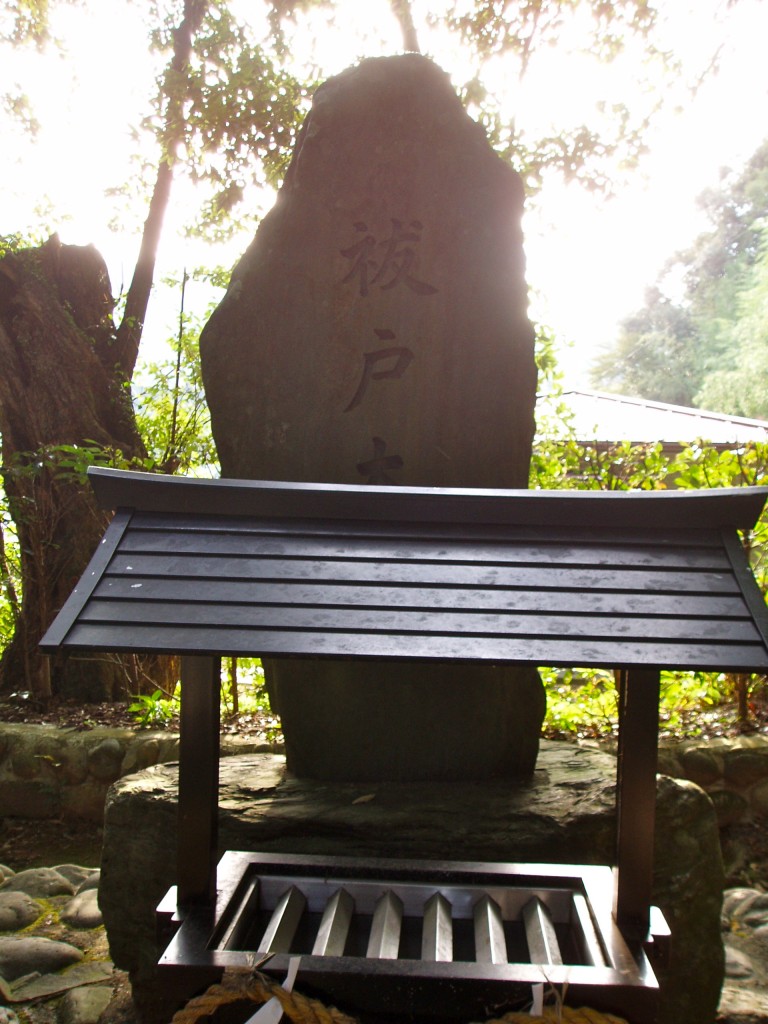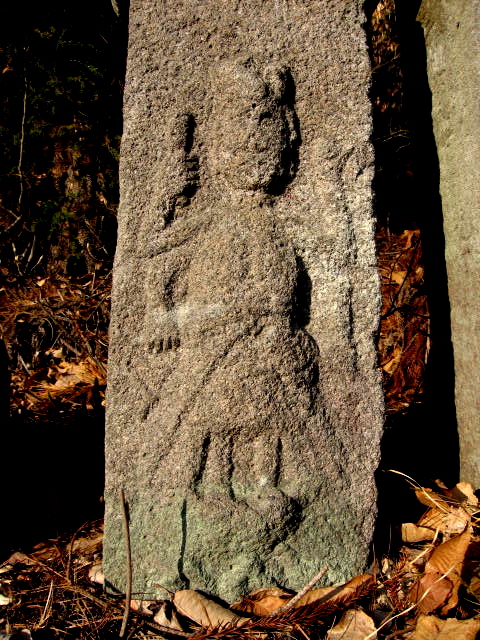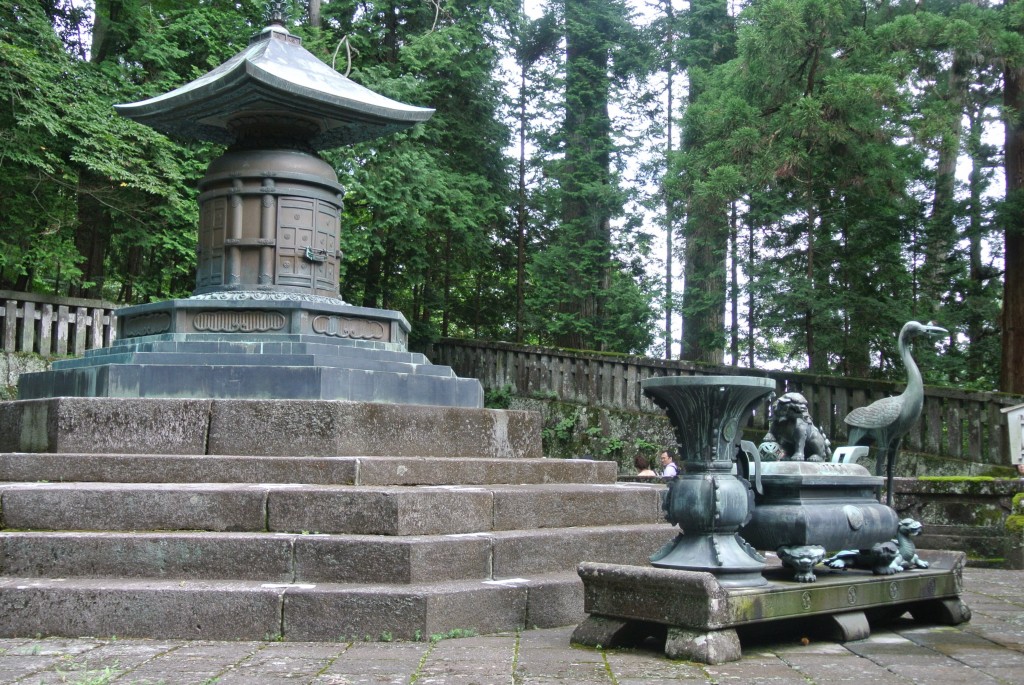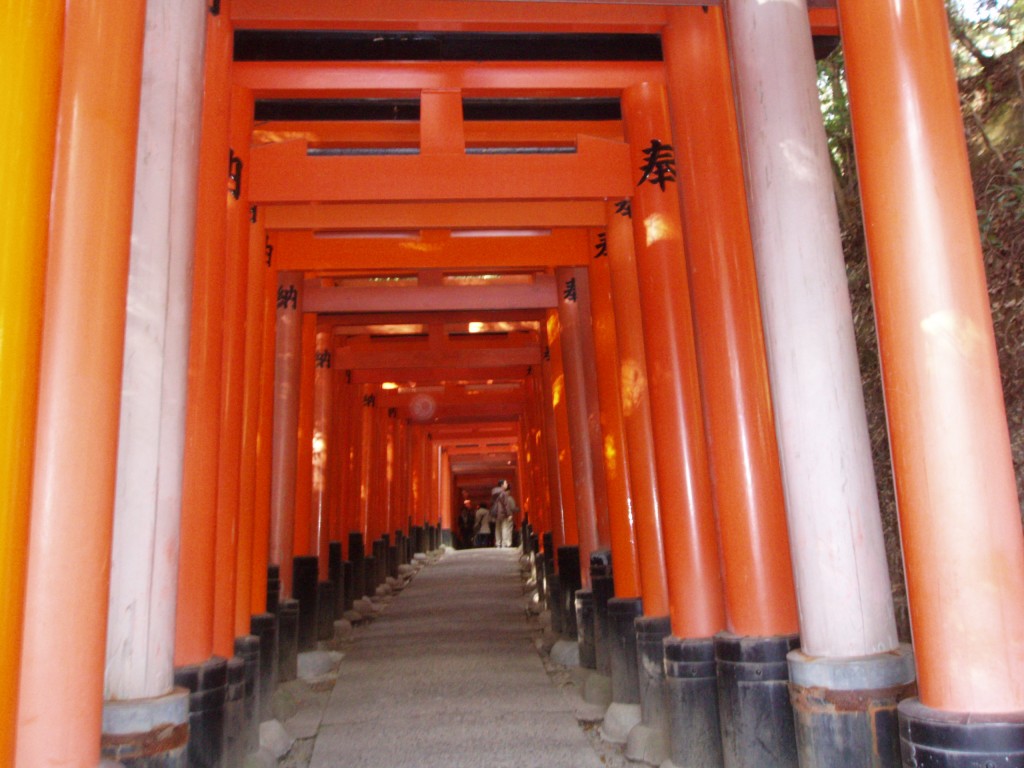Part Two of our mini-series on the kami is also extracted from the Shinto Shrines book recently out from the University of Hawaii Press. Illustrations are my own, and not those of the publication, as is the paragraphing.
*******************************************************************

Sacred rocks can house kami of nature
Types of kami
Because kami worship was originally site specific in nature, there is a great variety and number. Even where the same kami has been enshrined in a different location, it will take on the local traditions of its new home. In addition, the multiple nature of kami is a factor in their elusive image. For example, a single kami has a rough nature (aramitama), gentle nature (nigimitama), wondrous nature, (kushimitama), and nurturing nature (sakimitama). These shikon (four spirits) are often enshrined separately. The complex nature of the Japanese language, whereby inconsistency even in naming is common, adds to the problem. It may be helpful to understand something of the “eight million” kami (yaoyorozu) of Shinto by looking at the various ways they are made manifest.
Kami of nature:
There are kami that reside in a certain place, or manifest in that place spontaneously or when called upon. Often the place is notable in some way: a waterfall, a mountain of distinct shape, a volcano, a large rock, a large or unusually shaped tree. Though there are many tales of kami making an appearance in humanoid or animal form (especially white animals), the manifestation is generally considered to be in the heart of the worshipper, or in the result that occurs from calling the kami (such as healing or an answered prayer). Kami of nature can also be manifest in the active forces such as rain, wind, thunder, fire, and sunshine.
Kami of folk worship:
What is sometimes called “Folk Shinto” pertains to the local beliefs and practices that grow spontaneously among the people of a given location. It is usually a result of an ad hoc blending of myths, legends, superstitions, literary works, or clan origins. It also reflects the degree of isolation or wider distribution of a particular clan or occupational group.

Dosojin from a roadside in Nagano Prefecture
Some folk kami, such as the dosojin (deities of roads and boundaries), tend to be phallic in nature, and are most often seen in male/female pairs. Such kami are generally related to the concerns of daily life such as agriculture, fishing, the hearth, fertility, disease prevention, and good or bad fortune. It could be argued that so-called “folk worship” is the origin of Shinto, its true source and the power that sustains it. Folk Shinto is closely related to shamanism and divination as well.
Kami of deification:
These are humans who were raised to the status of kami after death. There are numerous examples and various reasons for such enshrinement. For example, Emperor Ojin (r. A.D. 270–310) is enshrined as the kami Hachiman, who is revered as a protector of the country and a god of war. Thanks largely to his popularity among the samurai of the Kamakura period (1185–1333), there are said to be about 25,000 Hachiman shrines in Japan today.
A different case involves Sugawara no Michizane, enshrined as the kami Tenman Tenjin. Though he came to be considered a kami of education, he was originally enshrined to appease his vengeful ghost (goryo), which was thought to be causing plagues in the capital of Kyoto. Today there are about 10,000 Tenjin shrines throughout the country.
Another example is Tokugawa Ieyasu, the first Edo shogun, who unified the country and who decided that after his death he should be enshrined as a kami, for the purpose of watching over the country. His descendants duly carried out his wish, and today the magnificent Nikko Toshogu is one of the most popular destinations in Japan for worshippers and tourists alike. It was mentioned above that deification of kami was somewhat akin to that of a saint, but it differs in that the attributes that make a kami are not decided by any central authority and the person concerned is generally a secular figure such as a scholar, a general, an ancestor or benefactor of a community or clan (uji), or a member of the imperial family.

The grave of Ieyasu at Tosho-gu, Nikko, where he is deified as Tosho Daigongen (Great Avatar of the Shining East)
Kami of shared belief: Kami that are common to a wide spectrum of geographical areas are generally those that have been spread from one original location. Such are the kami of the Kojiki and Nihon shoki—for example, Amaterasu, Susano-o, and Okuninushi—who were local kami proselytized into national figures, along with the beliefs surrounding them.
The process of enshrining the kami of one place in another location is called “dividing the spirit” (bunrei). Essentially, the kami is “invited” to enter into a new place and installed there in a ceremony called kanjo; there is no limitation on the number of places that a kami can be enshrined, nor is the power of the divided deity any less than the original. In addition to the Hachiman and Tenjin shrines mentioned above, Inari shrines are said to be the most frequent at about 32,000, followed by about 18,000 for Ise shrines. (However, though they enshrine Amaterasu and are called Ise shrines, the spirit is not divided from Ise Jingu).
This process was expedited during certain periods of history, when the right to enshrine a particular kami was sold, as was the case with the expansion of Inari (a rice kami) shrines—a sort of religious franchising. Enshrinement of these kami expanded to the extent that today, two-thirds of existing shrines are said to be of the Hachiman, Inari, Ise, or Tenjin lineages.
A word of caution: there are no precise figures on the number or type of enshrinements of a particular divinity. The numbers quoted in this book are from an old survey and probably represent guesswork more than actual accounting. (For example, the total number of just these shrines exceeds the overall number registered as religious bodies.) Indeed, the number of registered Hachiman shrines is said to be no more than two thousand. Since no comprehensive shrine count has ever been done, numbers are anecdotal and vary widely.

Red torii tunnels, characteristic of Inari shrines where the rice kami is enshrined

Leave a Reply